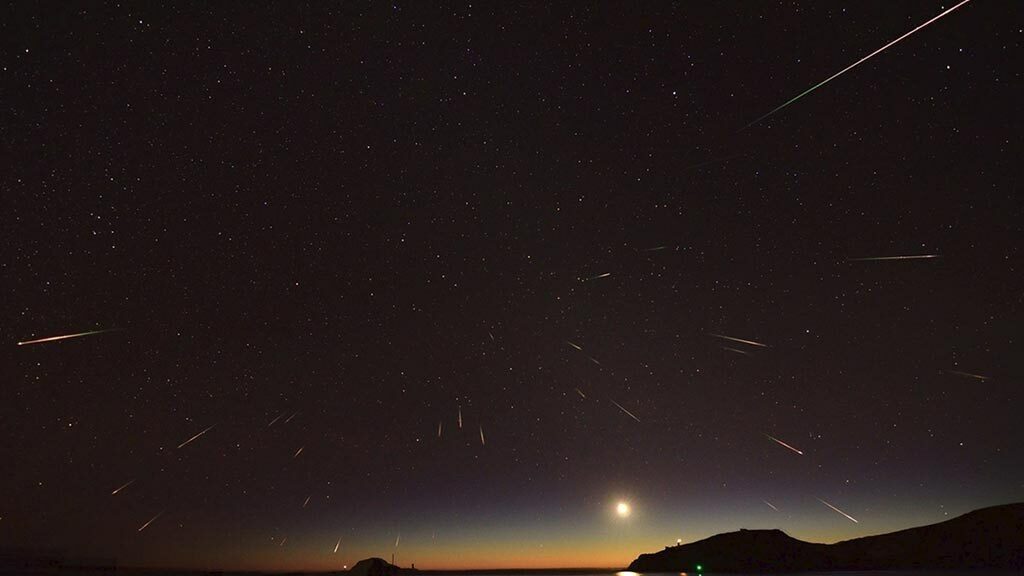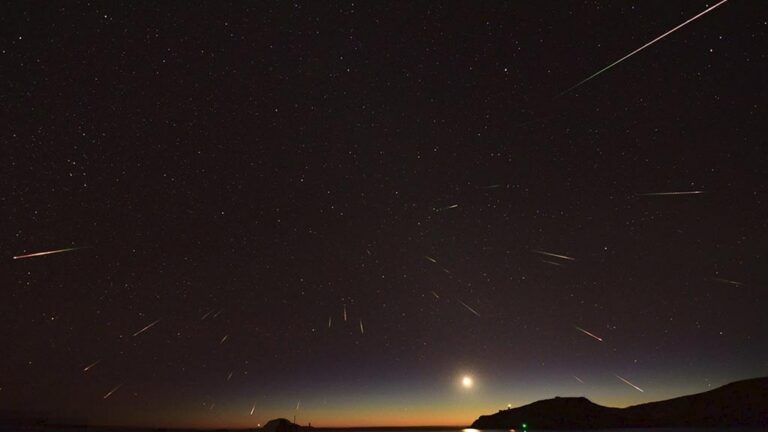2019 is going to be quite the year for astronomical events!
2018 had some amazing astronomical events with the two total lunar eclipses seen from Perth, three partial solar eclipses and a number of meteor showers getting lucky with the weather and having clear skies on their peak nights.
2019 promises to be just as amazing and while Perth isn’t going to be able to see a lot of these events (We have to share), we’ll still be able to watch live streams of these events, so we don’t miss out.
January’s Partial Solar Eclipse

On Wednesday the 6th of January, a partial solar eclipse will occur where the Moon will pass between the Earth and the Sun and partially cover the Sun. It’ll be visible from locations in the North Pacific and North East Asia, including Beijing, Irkutsk in Russia, Seoul, Taipei, and Tokyo.
The partial solar eclipse with occur from 7:34 am to 11:48 am AWST.

January’s Total Lunar Eclipse

On the night of the 21st of January, people in the America’s, the UK, Portugal, Morocco and some of the Scandinavian countries will experience the year’s only total lunar eclipse and the last one until 2021. The eclipse will begin at 11:33 pm AWST, as the moon enters the Earth’s shadow and they’ll see a black shadow start to cover the moon.
That shadow will fully cover the Moon by 12:41 pm AWST and the Moon will turn a copper colour until 1:43 pm AWST where the Moon will start to move out of the Earth’s shadow. The eclipse will be over by 2:51 pm AWST and you can watch the live stream of the whole event at //www.timeanddate.com/live.
The January Full Moon is often called the Wolf Moon and that name has Native American origins as the wolves would start to the active in January. This January’s Full Moon is also a Super Moon as the Moon will be at its closest point to the Earth in its elliptical orbit and will appear slightly bigger than normal.

Venus & Jupiter’s ‘double kiss’ Conjunctions in January and November

On the 22nd of January and then again on the 24th of November, we’ll have a conjunction of the planets Venus and Jupiter. Conjunctions involve objects in the Solar System and/or more distant objects, such as a star. It’s an apparent phenomenon in which multiple objects which aren’t close together appear close in the sky and it’s caused by the observer’s perspective.
In the early morning on the 22nd of January, they’ll be just 2.4 degrees apart in the eastern sky while in the early evening on the 24th of November later in the year the two planets appear even closer with only 1.4 degrees separating them in the western sky just after sunset.

May’s Eta Aquarids Meteor Shower

Starting early in the morning on the 7th of May, the Eta Aquarids meteor shower will be their peak. The shower is active from the 19th of April through to the 28th of May. Its meteor per hour rate can vary between 40 – 50 meteors per hour when the Constellation of Aquarius is directly above you and there is no Moon.
Thankfully for this year, the Moon won’t be up during the night of the 7th of May, so it’s best to go out after 2:30 am and if you want to give yourself the best chance to see as many meteors as possible, you should get away from Perth to places like Lake Clifton and Lake Leschenaultia and

July’s Total Solar Eclipse

On the 3rd of July, a total solar eclipse will occur where the Moon passes between the Earth and Sun and will totally cover the Sun. It’ll be visible from locations in the South East Pacific and Chile and Argentina in South America.
The total solar eclipse with occur from 12:55 am to 5:50 am AWST.

July’s Partial Lunar Eclipse

On the 17th of July, the Moon will partially enter the Earth’s shadow and will have a black shadow partially cover it. This eclipse will be viewable in Perth and most countries around the world apart from the USA, the majority of Canada and Russia’s Serbian region.
The eclipse will begin at 4:01 am and it’ll 6:59 am AWST.

November’s Mercury Transit of the Sun

On the 11th of November, Mercury will pass directly between the Sun and the Earth and you’ll see a tiny black dot silhouetted against the Sun’s disk. This will start at 20:34 pm and finishes at 2:05 am AWST and will be best viewable on the East Coast of the USA and Canada, countries on the Western edge of Africa and countries in Central and South America.
the will be the last transit until May 2032, but transits of Mercury with respect to Earth are much more frequent than transits of Venus with them occurring about 13 or 14 times per century. This is because Mercury is closer to the Sun and it orbits more rapidly around the Sun in 88 Earth days. These transit matters because Mercury is so hard to study otherwise. Getting to Mercury is a brutally difficult thing to accomplish as it’s extremely hot that close to the Sun and the probe has to go so deep into the gravity well of the sun and it’s aiming at a planet that’s moving 48 kilometres per second it’s a navigational nightmare.

December’s Annular Solar Eclipse

On the 26th of December (Boxing Day), an annual solar eclipse will occur where the Moon covers the Sun’s centre, leaving the Sun’s visible outer edges to form a “ring of fire” or annulus around the Moon. It’ll be visible from locations including Saudi Arabia, Sri Lanka, Indonesia, Malaysia, the southern tips of India and the Philippines.
The total solar eclipse with occur from 10:29 am to 4:05 pm AWST with Geraldton, Carnarvon, Karratha, Port Headland, Darwin, Cairns and Townsville being able to see a partial solar eclipse as these towns and cities fall in the outer shadow that is being cast on the Earth by the Moon.

Want to learn more about the universe around us?
Book a tour today at the Perth Observatory.













